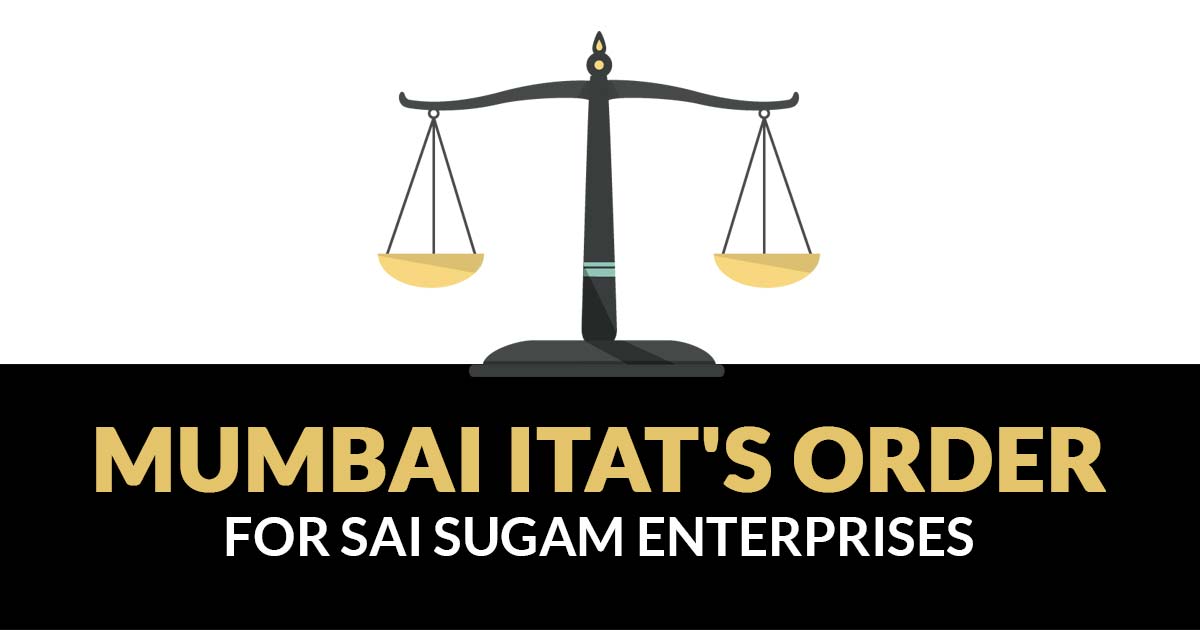
The assessing officer who has issued a show cause notice under Section 274 read with Section 271(1)(c) of the Income Tax Act,1961 is defective/invalid since the same does not explicitly convey to the taxpayer about the certain fault/charge the taxpayer would have proceeded for impose of penalty, held by the Mumbai Bench of Income Tax Appellate Tribunal (ITAT).
Sai Sugam Enterprises, at the time of the assessment proceeding the AO charged an amount of Rs.71,78,070/- under Section 271(1)(c) of the IT Act by penalty order for Assessment Year (AY) 2011-12. The taxpayer disappointed by the order filed an appeal before the Commissioner of Income Tax (Appeals).
It cited the High Court’s full-bench ruling in the matter of Mohd. Farhan A. Shaikh v. DCIT, where it was decided that the penalty itself would be void if a show cause notice was given prior to the imposition of a fine without identifying the offence or charge for which the assessee is being prosecuted.
As a result, the punishment imposed by AO is invalid, and the penalty must be removed. The Department has objected to this CIT (A) action, and an appeal has been made to the Tribunal.
Read Also: ITAT Instructs Commissioner to Adjudicate the Manual Appeal, Assessee Doesn’t Know e-Filing Process
The Bench made up of ABY T. Varkey, Judicial Magistrate, and Amarjit Singh, Accountant Member, noted that CIT(A) determined the penalty notice issued by AO was prepared in the standard format, and that its contents show that both faults/charges, “have concealed the particulars of income and/or furnished inaccurate particulars of such income,” have been spelt out. However, CIT (A) determined that AO had not made clear whatever charge or fault the assessee was accused of in order to levy the penalty.
The Tribunal cited the Karnataka High Court’s ruling in the case of CIT vs. Manjunatha Cotton and Ginning Factory, which held that the notice issued by the Assessing Officer under Section 274 read with Section 271(1)(c) of the Income Tax Act, 1961 (for short, “the Act”) was invalid in law because it failed to specify which provision of that section, i.e., whether for concealing income particulars or furnishing false information, was the basis for the.
The Bench concluded that the assessee’s precise offence or charge giving rise to the imposition of the penalty was not made clear in the penalty notice, and as a result, the imposition of the penalty by the AO is deemed to be “null” in legal terms.
As a result, the CIT (Appeals) decision to delete the penalty was kept, and the revenue’s appeal was denied.
| Case Title | Sai Sugam Enterprises vs DCIT |
| Citation | I.T.A. No.1474/Mum/2023 |
| Date | 27.07.2023 |
| Counsel For Appellant | Shri Subodh Ratnaparkhi |
| Counsel For Respondent | Dr. Kishore Dhule (DR) |
| Mumbai High Court | Read Order |









